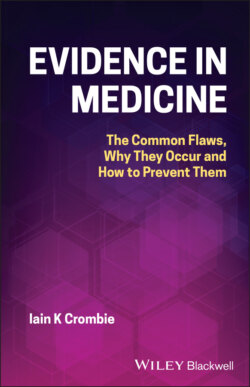Читать книгу Evidence in Medicine - Iain K. Crombie - Страница 33
Modified Intention to Treat
ОглавлениеThe term modified intention to treat (mITT) is commonly used to describe the analysis of trial data [61, 62]. It has no formal definition [63], but usually involves the deliberate exclusion of some participants from the analysis at some time after randomisation. Patients can be excluded for several reasons: the results of the baseline assessment; results of a post‐baseline assessment; the amount of treatment received; or failure to obtain the outcome measures [63]. Individual trials could employ one or more of these reasons to exclude patients. The impact of mITT on estimates of treatment benefit varies: one review found that, compared to intention to treat (ITT) analyses, the modified method inflated treatment effects [64], whereas another study found no difference between ITT and mITT [65]. The practice of excluding patients after randomisation has been widely criticised because of its potential to introduce bias [62, 66, 67].
